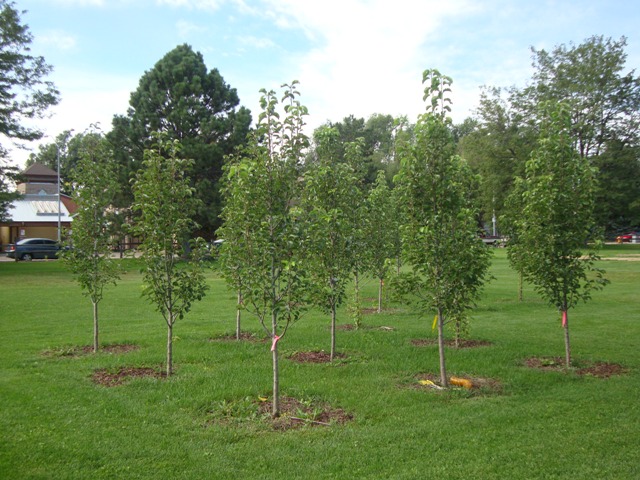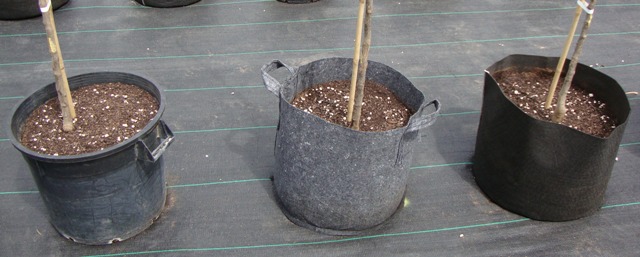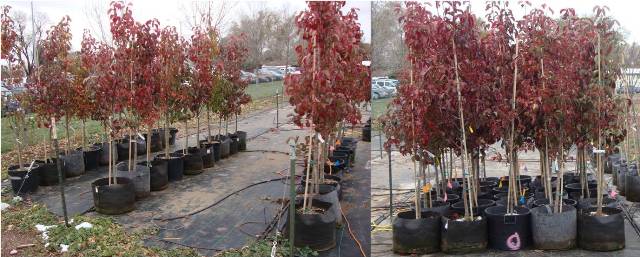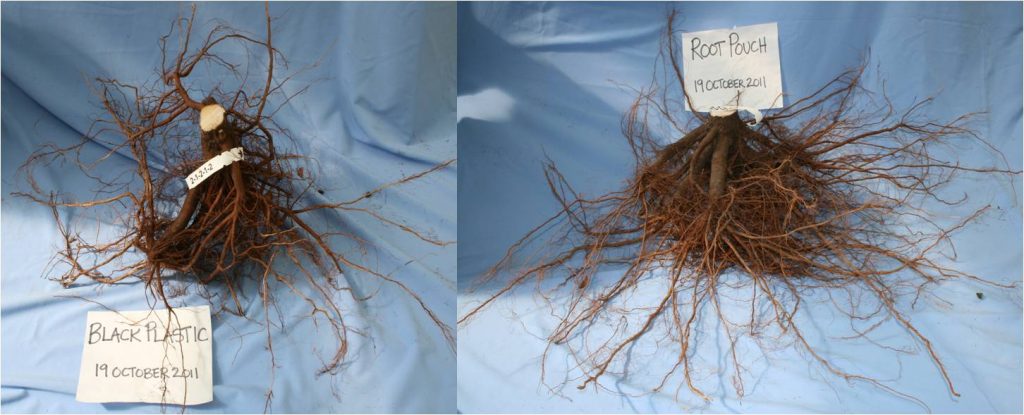Alison Stoven O’Conner, Graduate Student; Dr. James E. Klett, Professor and Extension Landscape Horticulturist
The most commonly used container type for nursery tree production is the black plastic (BP) container. Roots of plants grown in BP can be injured by the wide diurnal temperature fluctuations which occur during most of the growing season. The longer trees remain growing in BP, the greater the potential for the development of circling and malformed roots. Root injury sustained during production may negatively affect tree health when planted in the landscape.

Our research uses Pyrus calleryana Decene. ‘Glen’s Form’ (Chanticleer®) to compare tree production using two non-conventional, fabric container types (Root Pouch®, Averna & Associates, Hillsboro, OR, and Smart Pot, High Caliper Growing-Root Control, Inc., Oklahoma City, OK) along with BP containers. Our hypothesis is that the use of fabric containers will reduce the severity of root zone temperature fluctuations seen with BP, promote the development of healthier root systems, enhance tree growth rate, shorten production time and produce trees that show less stress and establish more quickly when planted in the landscape.

Trees are being grown in a nursery production setting using current industry standards. In addition to container type, two overwintering treatments are being examined – trees are either consolidated pot-to-pot in a block, or left “lined out” in rows.

Standard tree growth measurements are taken throughout the growing season. A portion of the trees were destructively harvested in the first and second seasons following initial planting in containers. Trees are planted into the landscape during the first through third growing seasons; trees will be fully excavated and harvested (after one, two and three growing seasons) through air spading to compare transplant root and shoot growth. Post transplant stress of trees will be determined during the growing season using pre-dawn leaf water potential and infrared leaf temperature.
In 2010 there were no statistical differences in height, dry leaf weight, dry shoot weight and dry root weight among the three container types. Trees growing in BP had more circling roots than those produced in both fabric container types. In 2011 there were statistical differences within the three container types for caliper, height, leaf area, leaf moisture percent, bottom root matting and root ball quality. The 2010-2011 overwintering treatments were significant for height, dry leaf, root and shoot weight and leader growth; consolidated plants had significantly larger root and shoot systems. BP containers had the greatest temperature fluctuations in both overwintering treatments compared to fabric containers.

Black plastic (left) and Root Pouch (right) root systems one year after planting.
